An exploration into the nocturnal habits of mason bees, uncovering if they sleep at night and how it affects your garden's ecosystem.
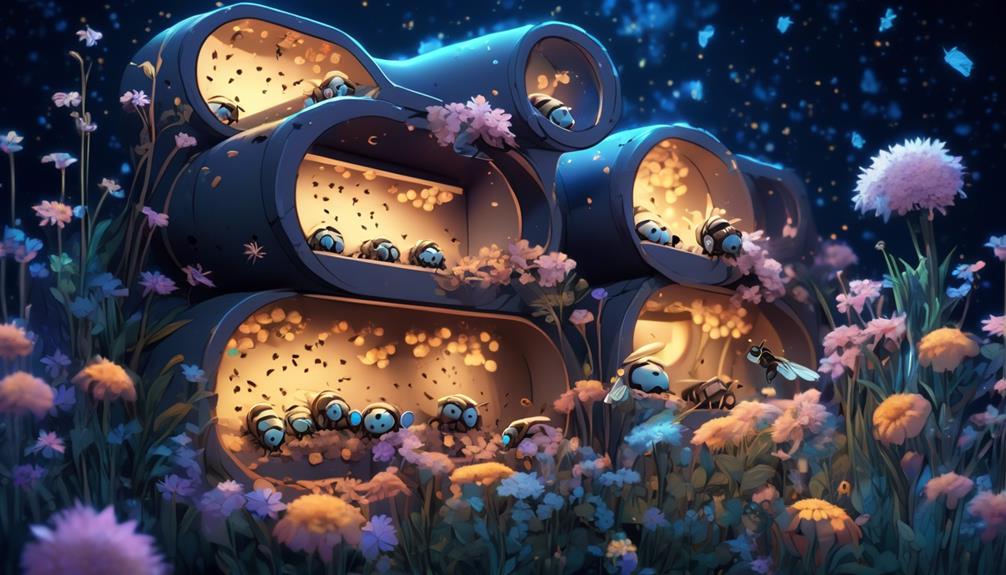
Do Mason Bees Sleep at Night?
Just as the moon takes over the sky when the sun sets, you might wonder if mason bees, those industrious insects, also retire to rest when night falls.
It's an intriguing question, isn't it? What do these diligent creatures do when the darkness sweeps over the landscape?
In the world of insects, sleep patterns are as diverse and fascinating as the species themselves. But when it comes to mason bees, their nighttime activities may surprise you, and understanding their rest habits could even enhance your efforts in your own garden or local ecosystem.
Stick around, because you'll want to know more about what happens when the sun goes down in the world of mason bees.
Key Takeaways
- Mason bees do not sleep in the conventional sense, but enter a state of torpor at night.
- Torpor helps mason bees conserve energy and survive cold nights.
- Mason bees nestle in their nests at night for safety and perform maintenance using mud and saliva.
- Environmental factors, light exposure, and overall health can affect mason bee rest and sleep patterns.
Understanding Mason Bee Behavior
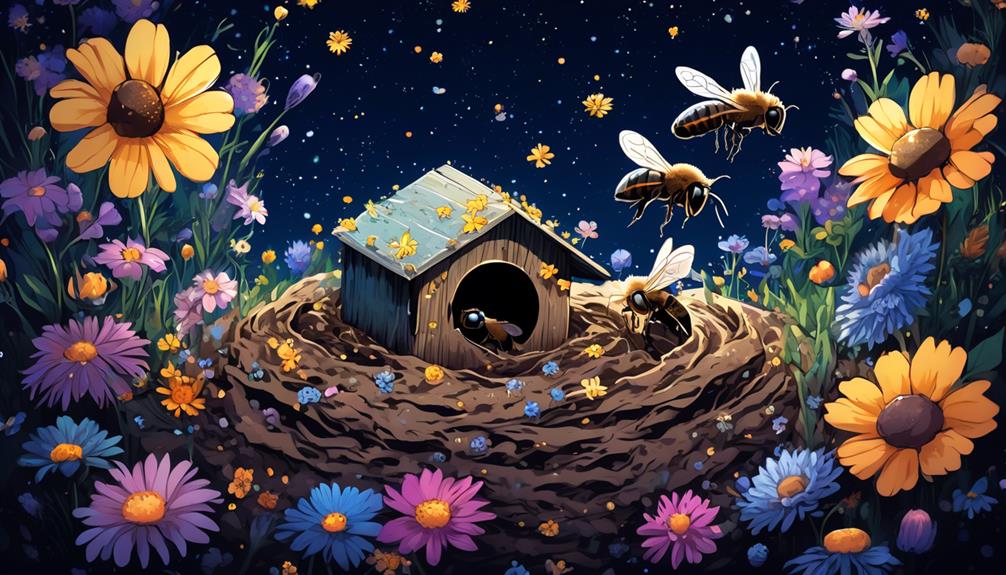
To fully grasp the behavior of Mason bees, you must delve into their daily routines, which surprisingly include periods of rest during the night, akin to our concept of sleep. Unlike their more social counterparts, honeybees, which buzz around their hive 24/7, Mason bees aren't nocturnal. They're diurnal, active during the day, and restful at night.
You'll find them taking refuge in their nests, which they cleverly construct in hollow reeds or holes in wood, giving them their name. They're solitary creatures, each female toiling away independently to provide for her offspring.
Your interest might peak as you observe that their sleep isn't just a state of rest. Studies show that bees enter a state of torpor, where their metabolic rate and body temperature drop significantly. This helps them conserve energy during the cold nights.
Nighttime Activities of Mason Bees

While Mason bees spend their nights primarily in a state of rest, they still exhibit certain behaviors and activities that are integral to their survival and overall lifecycle. For instance, they're often found nestled in their nests, which they meticulously construct during the day. It's a way of conserving energy and staying safe from predators. They don't actually sleep as you or I do, but enter a state of torpor, a deep, restful state that lowers their metabolism and conserves energy.
Another nighttime activity, although less common, is mating. Unlike honeybees, who mate during flight in broad daylight, Mason bees have been observed to mate at night. It's a risky endeavor, as their visibility significantly decreases, but it's crucial to their lifecycle.
Lastly, Mason bees also perform maintenance and fortification of their nests at night. They use a mixture of mud and saliva to build and repair their nests, which ensures the safety of their eggs. If you observe closely, you may even see a Mason bee at work, under the dim light of the moon, diligently creating a safe haven for its offspring.
Sleep Patterns in Bees: A Deep Dive
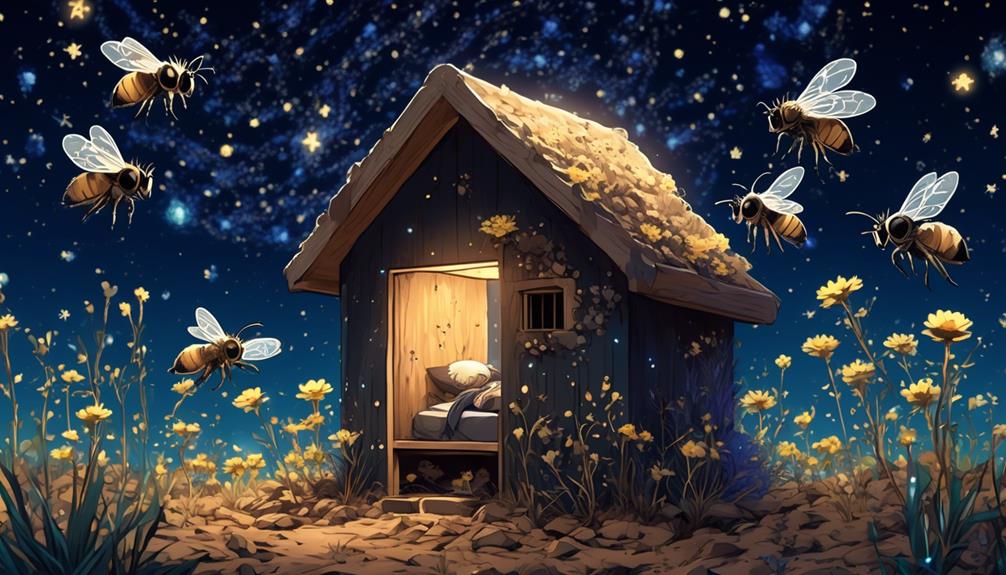
Diving into the sleep patterns of bees, it's crucial to understand that bees, including the Mason species, do not sleep in the conventional sense we're familiar with. Instead, they enter a state of torpor, a deep rest period where their body temperature drops and metabolic rate slows down. This rest state is fascinatingly efficient and necessary for their survival.
Let's explore some intriguing bee sleep patterns:
Bee Type | Sleep Duration | Sleep Location |
|---|---|---|
Honeybee | 5-8 hours | Inside hive |
Mason Bee | 6-9 hours | In tubes, holes |
Bumblebee | 7-10 hours | Underground |
Carpenter Bee | 4-7 hours | In wood |
Leafcutter Bee | 6-9 hours | In leaves |
It's important to note that these patterns can vary depending on the bee's age, role, and environmental factors. Worker bees, for instance, have shorter rest periods than the queen bee. Also, some bees even exhibit signs of REM sleep, which is still a topic of ongoing research. Understanding these sleep patterns not only sheds light on the intricate behaviors of bees but also contributes to their conservation efforts.
Factors Affecting Mason Bee Rest
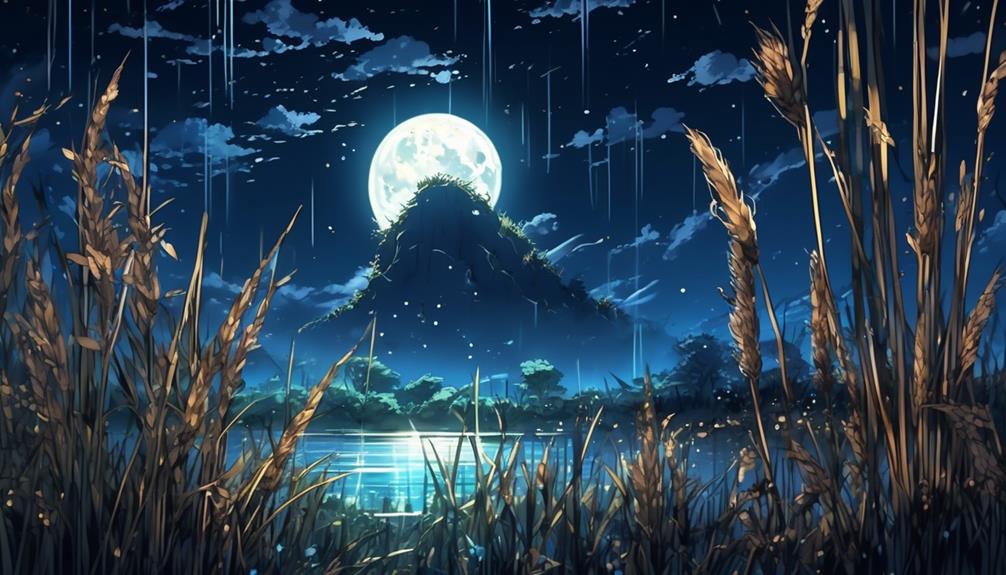
Now that we've a basic understanding of bee sleep patterns, let's focus on the factors that influence the rest periods of Mason bees specifically.
You should know that environmental conditions play a significant role. For example, temperature changes can affect their sleep-wake cycle. Mason bees, like other insects, are ectothermic, meaning they can't regulate their body temperature internally. So, if it's too cold, they may enter a state of torpor, a sleep-like state to conserve energy.
Light exposure is another crucial factor. These bees are diurnal, active during daylight hours and resting at night. Disruptions in light patterns can confuse their internal body clocks, impacting their sleep.
Lastly, the overall health of the bee can influence its rest. Pesticide exposure, parasites, and disease can weaken a bee, reducing its sleep quality and duration.
Comparing Mason Bees With Other Species
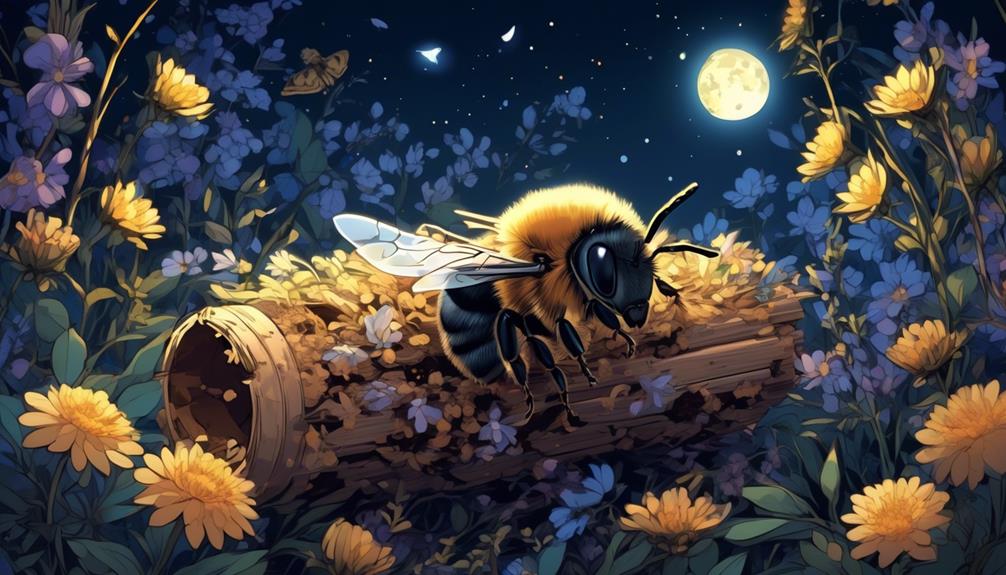
In comparing Mason bees with other species, you'll find distinct differences in sleep patterns, largely influenced by their unique life cycles and environmental interactions. Unlike honeybees that operate on a 24-hour cycle and sleep at night, Mason bees are solitary creatures that follow a more flexible sleep schedule, often sleeping during the day in periods of low light or reduced temperature.
Honeybees typically exhibit collective sleeping behavior, clustering together in large groups. Mason bees, being solitary, don't show this behavior. Each bee creates its own mud nest and rests independently. This impacts their sleep patterns significantly, allowing them to be more adaptable to changing environmental conditions.
While bumblebees, like honeybees, also sleep at night and can enter a state of torpor during cold conditions, Mason bees are more active during cooler seasons. Their tough exoskeletons and high metabolic rates allow them to function efficiently in low temperatures.
Lastly, consider the Monarch butterfly, which migrates great distances and thus has a unique sleep pattern. It sleeps during the day, unlike Mason bees. This demonstrates that sleep patterns in insects aren't uniform but are dictated by their lifestyle, environmental factors, and survival needs.
Conclusion
So, do mason bees sleep at night?
Yes, they do. Like most bees, their activities are dictated by daylight, meaning they rest when it's dark. Numerous factors can influence this, from temperature to weather.
Comparatively, their sleep patterns align with other bee species. Understanding these sleep habits not only aids in their conservation but also enriches our knowledge of insect behavior overall.
Indeed, the nighttime slumber of mason bees is as fascinating as their buzzing daytime activities.


